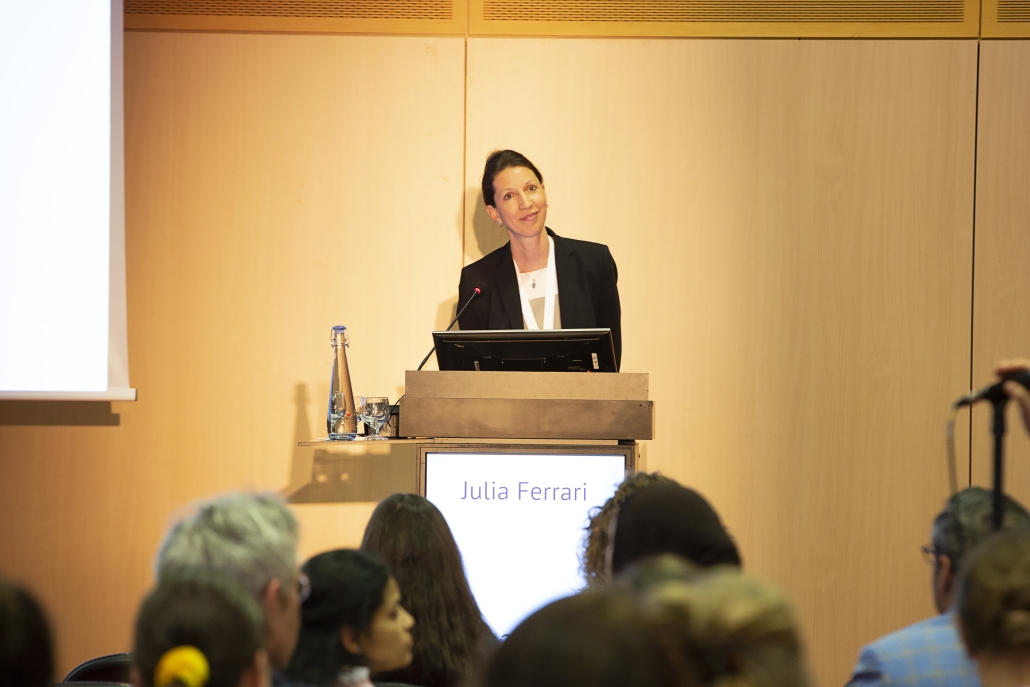By Stela Rutovic
Chairs: Paola Santalucia (Italy), Diana Aguiar de Sousa (Portugal)
The first lecture was presented by Cheryl Bushnell (United States) on the topic, Stroke Care Access: Why are older women still undertreated? Overview of current studies showed that women present with more non-traditional stroke symptoms, and are more likely to have diagnosis of stroke mimics. At the time of stroke onset women are older than men, which is associated with more comorbidities and lower pre-stroke function, as well as more severe strokes. Women are less likely to receive defect- free care, and social determinants of health are major factors in access to care before, during and after stroke.
The second speech on the topic, Women and AF- A dangerous relationship? by Julia Ferrari (Austria) reported that although atrial fibrillation is more common in men, women have higher risk of stroke than men, more debilitating strokes and higher stroke mortality. Women are more likely to experience atypical Afib symptoms, tend to have more frequent and longer- lasting AFib episodes than men, and are less likely to receive oral anticoagulation therapy. Several factors contribute to higher stroke severity in women such as higher rates of total anterior circulation strokes (TACS), smaller vessel diameter and influence of sex hormones on coagulation system.
The third lecture, Carotid stenosis management in women: important considerations for endarterectomy, by Seemant Chaturvedi (United States) discussed approach to carotid revascularization. Results of CREST study showed that women have higher complication rate with CAS compared to men. Indications for carotid revascularization do not differ between genders. The choice of optimal treatment should consider evaluation of patient’s risk profile, anatomic criteria, plaque morphology and medical comorbidities. Atherosclerotic plaques in women are different in morphology and composition compared to men. As a result, women may require different treatment than men. Women tend to be older than men at the time of revascularization. Previous studies have suggested uncertain benefit for asymptomatic women, and reduced benefit for symptomatic women. However, representation of women in carotid trials has been suboptimal and ongoing studies such as CREST 2 and SCORE are needed to provide data on risk/benefit ratio of revascularization vs. intensive medical therapy.
The fourth talk was on Adverse pregnancy events and outcomes- opportunity for primary prevention of stroke by Svetlana Lorenzano (Italy). Pregnancy is associated with many physiological changes which may contribute to occurrence of adverse pregnancy outcomes (APO) including hypertensive disorders of pregnancy, preterm delivery, small for gestational age, large for gestational age, placenta abruption, and pregnancy loss. Presence of APOs is associated with increased risk for development of cerebrovascular diseases (CVD), as well as traditional risk factors later in life post-pregnancy. So far, most CVD stratification studies have been conducted in middle aged and older women, who are more likely to have also developed conventional CVD risk factors. Studies in primary prevention of stroke have shown that low-dose aspirin started in early pregnancy reduces risk for some APOs among higher-risk females. It is important to implement healthcare system changes to improve the transition of care after pregnancy, with longer postpartum follow-up care to screen for CVD risk factors and provide CVD prevention counseling.
The last lecture in the session was on the topic of Rare causes of stroke in women, by Diana Aguiar de Sousa (Portugal) who emphasized the need of careful clinical evaluation of every patient with postpartum headache. Although it is a common complaint, clinicians should consider less common causes of secondary headache which are more common in women, such as cerebral venous sinus thrombosis (CVST), postpartum preeclampsia and eclampsia, PRES and RCVS. Hypertensive disorders of pregnancy are major risk factors for maternal stroke. CVST accounts for approximately 1/3 of pregnancy related strokes. In an ongoing Covid-19 pandemic, we should consider that CVST can also be a manifestation of vaccine induced immune thrombotic thrombocytopenia, which is rare side-effect of vaccination against Covid-19. The risk of pregnancy related stroke is also increased in several rare diseases such as fibromuscular dysplasia, moyamoya disease, peripartum cardiomyopathy, choriocarcinoma. Improving outcomes is dependent on proper identification of rare causes of stroke in women and early treatment.



